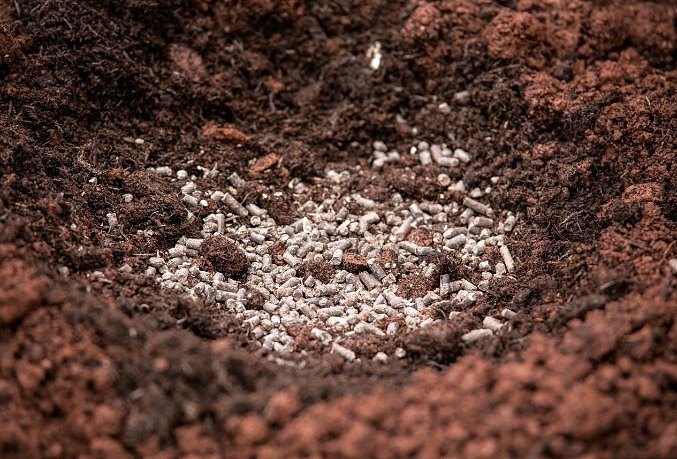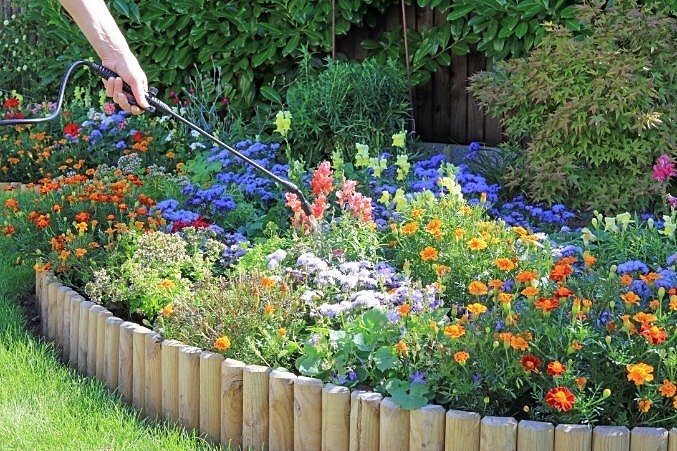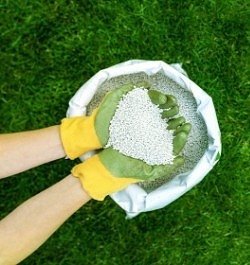
How and when to use fertilisers
5 Minute Read
Fertiliser is an essential addition to the garden and gives plants a boost of the nutrients they need to thrive. In this guide, we look at the different fertilisers available, what they do and how they can be a handy garden assistant when it comes to feeding your plants.What is fertiliser?
The main fertiliser ingredients are nitrogen, potassium and phosphorus, also known as NPK. These vital ingredients are essential to delivering the required nutrients to plants; with the help of these three essential nutrients, your plants will be happy, healthy and thriving!Nitrogen: helps to support healthy leaf growth.
Phosphorus:stimulates root development and helps plants to convert energy to assist with photosynthesis.
Potassium:also known as potash, supports fruit and flower production and helps plants fight diseases.
You may also see secondary ingredients including magnesium, calcium, iron as well as trace elements and other micro-nutrients.
For more information on Lawn NPK Ratios, click here.

What are the different types of fertilisers?
Some fertilisers are made with added chemicals and secondary ingredients while others are made of purely organic material. Fertiliser can come in many forms including as a soluble, a liquid, as a powder or in pellets; some composts can come ready mixed with fertilisers already included within the structure. So it's always worth reading the ingredients list!All fertiliser packaging will usually display an NPK ratio, main nutrient contents, as well as any secondary nutrients, further trace ingredients and if there have been any pesticides or herbicides added to the product.
There are specially formulated fertilisers for use on specific plants, such as flowers and fruits or lawns, etc. These specific products will have the correctly listed NPK ration based on the typical usage for that specific plants requirements.

Types of fertilisers available
• Organic Fertilisers - Made from all natural, organic ingredients• Compound fertilisers - A fertiliser that contains more than one of the three key nutrients (NPK)
• Controlled release fertilisers - Releases a small yet controlled amount of fertiliser over time
• Straight Fertilisers - A fertiliser which only contains one of the three key nutrients
• Specific use fertilisers - Specially formulated for use on specific plants

How to apply fertiliser
There are various ways in which fertilisers can be applied, the method of application will ultimately come down to the type of fertiliser you are using and should always be applied as per the instructions laid out by the manufacturer.Here are the most common ways in which fertilisers can be applied and what they mean:
Top Dressing: Applying the fertiliser over the existing top layer of soil to feed and stimulate growth.
Foliar Application:Spraying plants with a liquid fertiliser solution so it can absorb the nutrients through its leaves.
Base Dressing Application:Applying the soil to the ground or pot before planting which is then dug into the ground.
Broadcast method: Good for covering large areas with granular fertilisers before planting. Can be done by hand or with a spreader.
Some fertilisers require application during certain times of the year, for example in Spring or in Autumn while some can be applied all year round. Always consult the information as per the manufacturers instructions regarding specific application methods and if it is recommended for use at certain times of year within the growing phase.
What are lawn fertilisers?
Applying a fertiliser to your lawn is an essential step in ensuring it has the best level of care throughout the colder months of the year. There are plenty of options available when it comes to fertiliser and your first step to working out which is best for your lawn can be found using the guidelines below.For the best results, you will first want to mow, rake, aerate, re-seed (if necessary) and top dress your lawn, to ensure it is in the best condition for the cold weather ahead. More information can be found on preparing your lawn for winter, here.
Lawn fertiliser guidelines:
✽If you have a newly seeded lawn or have just laid turf, you want to support root growth so look for low Nitrogen, high Phosphorus and high Potassium.✽ If your lawn is established, you want to encourage growth so look for high Nitrogen, low Phosphorus and low Potassium.
✽ If your lawn is stressed, you want to boost growth and strength so look for high Nitrogen, low Phosphorus and high Potassium.
These aren't the only nutrients your lawn needs, but the most essential. How much your lawn needs of each will vary, hence the ratio. Calcium, magnesium and sulphur all contribute as does iron. An occasional feed with a seaweed fertiliser will help ensure the feed is balanced and keep your lawn in good condition.
Once you have maintained your lawn ahead of winter, it's worth giving it a bit of a break. Avoid walking on your grass and applying further lawn treatments.

Shop all fertilisers
Whatever kind of fertiliser you need for your garden plants, trees, lawn, vegetable plot or pot plants, Fargro Home & Garden has a fertiliser to suit your needs.VIEW ALL FERTILISERS
Related articles

Everything you need to know about lawn NPK
It gets mown frequently and walked on often; dogs chase balls on it and, if there are youngsters about, it might even be subjected to the occasional football game.Because lawns endure so much wear and tear, more than any other plant in the garden they need extra TLC, in the form of fertiliser.
find out more

How does MO Bacter Work?
A definitive guide to MO Bacter, and the results from our own experience using it in the garden.find out more
Tags: Fertiliser, plant feed
Comments (0)
Why not be the first to send us your thoughts?
Leave A Comment
Most popular articles
1
Plastic plant pots dimensions and uses2
Peat vs Peat Free - Choosing the right Potting Compost3
How to Grow Watercress at home in plant pots4
January Jobs5
March Jobs